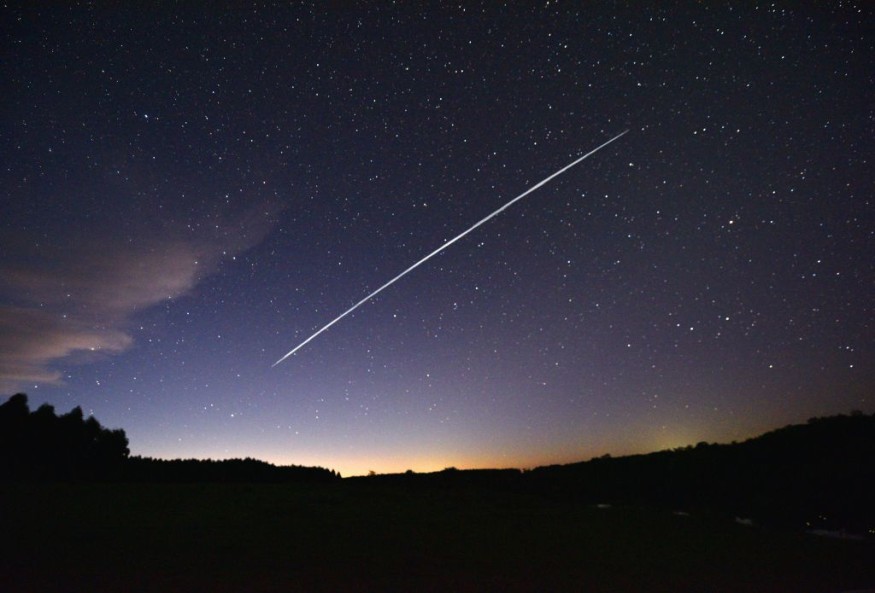
Residents in the Brazilian states of Maranhão and Tocantins were shocked to see a strange luminous phenomenon on Saturday night, January 29. Some say it was a re-entry of space junk into Earth's atmosphere, particularly a small satellite from the Starlink network launched in 2020.
The crashing satellite was seen at around 11 PM and only lasted for 20 seconds, supporting the residents' hypothesis that it was indeed a satellite. Experts say a meteor or a plane crashing would have been faster than that.
This long-exposure image shows a trail of a group of SpaceX's Starlink satellites passing over Uruguay as seen from the countryside some 185 km north of Montevideo near Capilla del Sauce, Florida Department, on February 7, 2021.
Starlink Satellite Falling Back to Earth
Newsbeezer reported that the object responsible for the light show last weekend was one of the satellites of Elon Musk's Starlink network. The company reported a re-entry of one of their satellites at the same time when residents at the two Brazilian states reported the sighting.
Satellite number 1840 was launched on November 25, 2020, from Cape Canaveral Air Force Base in Florida, USA. It is one of the satellites of the 14th batch of the project out of the 34 launches that have put over 2,000 Starlink satellites in low Earth orbit.
Starlink satellites are small weighing approximately 507 pounds (230 kilograms) each and are very fragile. They are made up of thin metallic structures that contain scientific instruments and solar panels. Each satellite has an orbital speed of 27,000kph and almost every part of it disintegrated during re-entry.
Experts said that a Starlink satellite is so fragile, thin, and light that hardly any part of it survived the atmospheric passage. Therefore, it poses minimal harm to people on the ground and does not have the hydrazine tanks of a conventional satellite, which is a risk for safety.
The only part that could survive the re-entry is the three thrusters maneuvering the satellite in orbit. However, they are so small and are more likely to have fallen in an uninhabited area, a forest, or ocean.
Satellites Re-Entering Earth's Atmosphere
Musk's Starlink company has been building its satellite network in low Earth orbit to provide an internet connection to remote areas. But aside from them, both government and privately-owned satellites are swarming in space creating more space junk.
Every now and then, people from different parts of the world are witnessing falling satellite and rocket bits that make it a common phenomenon in the new era of space exploration. These technologies sent to space were not meant to last forever because most of them have an expiration date, while some are experiencing faults in their system that caused their re-entry.
According to Britannica, space debris or space junk in low Earth orbit could be as large as a discarded rocket stage or as small as a microscopic chip of paint. Much of them are floating 1,200 miles (2,000 kilometers) above Earth or in the geostationary orbit that is 22,236 miles (35,786 kilometers) above the Equator.
To date, there are an estimated 200,000 pieces of space measuring between 1 and 10 cm and millions of pieces smaller than 1 cm. The time it takes for these space junk to fall on Earth depends on its altitude, which means they could be in orbit for centuries.
But when they re-enter Earth's atmosphere, they are expected to travel at very high speed, burning up due to friction with the air and generating a luminous phenomenon. Most of them will disintegrate or become very small upon landing the risk for injury or destruction is virtually non-existent.
RELATED ARTICLE : Experts Reveal That 3% Of SpaceX's Starlink Satellites Have Failed In Orbit So Far
Check out more news and information on Starlink in Science Times.












